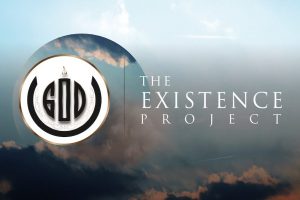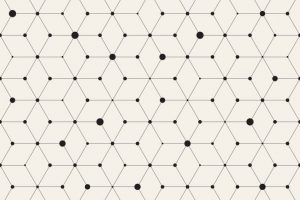
Dr Munazza Alam & Sinwan Basharat
Every year as the month of Ramadan nears end, Muslims around the world eagerly look to the night sky, awaiting the new moon – a sign that Eid-ul-Fitr has arrived. Whereas we commonly use the solar or Gregorian calendar in routine life to characterize dates, Ramadan is a reminder that Islamic months and years are based entirely on the moon’s phases.
The lunar calendar is not unique to Islam nor was it not developed by Islam. Rather, it has been used for thousands of years. Historians think that the Sumerians (4500 BC to 1900 BC) were the first civilization to adopt the lunar calendar. [1] Similar to Islam, Sumerians had a calendar consisting of 12 months each with 29 or 30 days starting from the first day the new moon could be seen. However, as the lunar calendar is shorter than the solar year by approximately 11 days, therefore, by 4th century BC, they modified (or intercalated) the calendar with an additional leap month. [1] Other religious calendars such as the Hebrew and Chinese calendars also use modified lunisolar calendars in which days or months are added to the lunar year to coincide with the solar cycle. [2] Today, the Islamic calendar remains one of the only calendar systems to exclusively rely on the moon to classify dates. [3]
While it may seem that lunar calendars have little relevance in the modern world beyond a reverence to religious tradition, new research is beginning to reveal the moon may play a unique role part in regulating different aspects of the natural world. The lunar calendar is based on the moon’s phases, which is regulated by a Divine process.
The Science Behind the Lunar Calendar
Allah says in the Holy Qur’an:
وَ ھُوَ الَّذِیۡ خَلَقَ الَّیۡلَ وَ النَّھَارَ وَ الشَّمۡسَ وَ الۡقَمَرَ ؕ کُلٌّ فِیۡ فَلَکٍ یَّسۡبَحُوۡنَ
‘And He it is Who created the night and the day, and the sun and the moon, each gliding along smoothly in its orbit.’ [4]
The lunar calendar is a time-keeping system in which each month corresponds to the 29.5-day lunar cycle, the length of time that it takes for the moon to orbit the Earth. During the lunar cycle, the phase of the moon is tracked by its shape – the portion of the moon that is illuminated by the Sun from our vantage point of Earth. The moon phases change gradually over the course of the lunar month as the moon moves along its orbit.
There are four main lunar phases [5]: the barely-there new moon is the first lunar phase, followed by the first quarter in which the right half of the moon is illuminated for an observer in the Northern Hemisphere, the full moon during which time the whole disk is fully lit, and the last quarter in which the left half of the disk illuminated (as seen from the Northern Hemisphere). [6]

Figure 1: Phases of the moon [5]
Between these main phases, the intermediate phases of the moon include those times during which the moon shape is either a thin crescent or gibbous (larger than a semicircle). We refer to the moon phases as ‘waxing’ (e.g., waxing gibbous) in the first half of the lunar month when the moon shape grows from the new moon to the full moon and ‘waning’ when the shape of the moon shrinks in the latter half of the lunar month. [5]
Implications of Lunar Phases in the Natural World
In the Holy Qur’an Allah has explained that one of the key purposes of both the sun and the moon is for tracking time.
ھُوَ الَّذِیۡ جَعَلَ الشَّمۡسَ ضِیَآءً وَّ الۡقَمَرَ نُوۡرًا وَّ قَدَّرَہٗ مَنَازِلَ لِتَعۡلَمُوۡا عَدَدَ السِّنِیۡنَ وَ الۡحِسَابَ ؕ مَا خَلَقَ اللّٰہُ ذٰلِکَ اِلَّا بِالۡحَقِّ ۚ یُفَصِّلُ الۡاٰیٰتِ لِقَوۡمٍ یَّعۡلَمُوۡنَ
‘He it is Who made the sun radiate a brilliant light and the moon reflect a lustre, and ordained for it stages, that you might know the number of years and the reckoning of time. Allah has not created this but in truth. He details the Signs for a people who have knowledge.‘ [7]
The role of the sun is apparent; the alternation between night and day, the change in seasons, and the cycle of a single solar year are an integral part of life. For example, many birds, in part, rely on changes in daylight each year, as a cue for their migration, reproduction, and other important life history behaviours. [8] The changes in the day length, due to the varying position of the Earth in relation to the Sun, serves as a natural and seamless calendar for these birds.
However, there is emerging research suggesting the moon and lunar phases may also play a critical role as a ‘reckoner of time’ in the natural world. For many marine organisms, in particular, lunar phases and 29.5-day cycles may regulate their behaviour. [9]
The most compelling evidence in recent times has come from the study of oysters (Crassostrea gigas) in the North Atlantic off the coast of southern France. Oysters have two shells that open and close throughout the day to consume food – most often plankton. [10] Researchers connected electrodes to their shells and monitored how much their shells open and close (i.e., amplitude), over a period of 3.5 months.

©Pixabay
The study showed that there was a strong correlation between how much the shells opened and lunar phases over the study period. [11] At each new moon, the shells open to the fullest and during full moons, the shells would close to the narrowest point, without fully closing. [11] Researchers also showed that the oysters were not just responding to the change in the moon’s lighting, but reacted differently during waxing (first half) and waning (second half) of the moon phases, even though the levels of light are largely similar. [11] The researchers concluded it is very likely that oysters have an internal biological clock that is directly tuned to the moon’s phases which may have implications for their feeding behaviours. [10,11]
Other research with marine organisms and small insects is also beginning to show that they respond to the various moon phases by altering their behaviour, reproduction, and feeding habits over the course of the 29.5 day lunar month. [9] Moreover, like many birds and other animals that respond to changes in daylight, these lunar-synced organisms have distinct genetic and molecular switches that respond to changes in moonlight over the course of a lunar month. [12] They can both sense the subtle changes in the intensity of moonlight and change in the moon’s phases to regulate their behaviour and physiology. [9,11,12]
Conclusion
The scientific insight of the Holy Qur’an is readily apparent in the verses that describe one of the roles of the sun and the moon as being ‘reckoners’ of time. Indeed, both have been used throughout human history for keeping a record of dates and tracking time. However, beyond anthropological implications, both the sun and the moon also play an important role in regulating the life cycles of creation across the natural world. So, as Muslims gaze at the night sky and engage in the tradition of sighting the new moon, it also spurs a sense of awe about the wisdom and intricacy behind Allah, The All-Mighty’s creation.
About the Authors:
Munazza Alam is a PhD student in the Department of Astronomy at Harvard University, a National Geographic Young Explorer, and a National Science Foundation Graduate Research Fellow.
Sinwan Basharat is a researcher with a background in molecular genetics and epidemiology. He works for a research agency in Ottawa, Canada. He also serves as a Deputy Editor for the Science Section in The Review of Religions.
ENDNOTES:
[1] Lunar calendar. Encyclopedia Britannica (2013). Available at: https://www.britannica.com/science/lunar-calendar. (Accessed: 2nd May 2021)
[2] Ben-Dov, J., Horowitz, W. & Steele, J. M. Living the Lunar Calendar. (Oxbow Books, 2012).
[3] Yin, S. What Lunar New Year Reveals About the World’s Calendars. The New York Times (2019). Available at: https://www.nytimes.com/2019/02/05/science/chinese-new-year-lunar-calendar.html. (Accessed: 4th May 2021)
[4] Holy Qur’an [21:34]
[5] Hocken, V. The Phases of the Moon. Available at: https://www.timeanddate.com/astronomy/moon/phases.html. (Accessed: 6th May 2021)
[6] For an observer in the Southern Hemisphere, the phases of the moon are “flipped”. For example, the first quarter as observed from the Southern Hemisphere would show the left half of the moon illuminated and the last quarter would show the right half of the moon illuminated.
[7] Holy Qur’an [10:6]
[8] Pokrovsky, I. et al. Longer days enable higher diurnal activity for migratory birds. J. Anim. Ecol. (2021). doi:10.1111/1365-2656.13484
[9] Tessmar-Raible, K., Raible, F. & Arboleda, E. Another place, another timer: Marine species and the rhythms of life. BioEssays 33, 165–172 (2011).
[10] Davis, N. Moonlight influences opening and closing of oysters’ shells | Oysters | The Guardian. The Guardian (2019). Available at: https://www.theguardian.com/food/2019/jan/09/moon-influences-opening-of-oyster-shells. (Accessed: 6th May 2021)
[11] Payton, L. & Tran, D. Moonlight cycles synchronize oyster behaviour. Biol. Lett. 15, (2019).
[12] Kaiser, T. S., Neumann, D. & Heckel, D. G. Timing the tides: Genetic control of diurnal and lunar emergence times is correlated in the marine midge Clunio marinus. BMC Genet. 12, (2011).




Add Comment